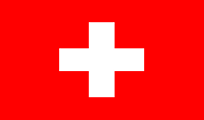Bottle or stainless steel tank – one or the other
Sparkling wine can be produced two different ways: either in the bottle, like Champagne or Franciacorta, or in a stainless steel tank, like Prosecco. We explain each process step by step.
The starting point for sparkling wine is ripe white or red grapes.
Classic production method


Producing wine in the traditional method (bottle fermentation)
Step 1
The winemaker harvests the ripe grapes. For Champagne, these must be Chardonnay, Pinot noir or Pinot Meunier.
Step 2
The grapes are destemmed and pressed. Next, the first fermentation takes place in the tank. Each variety undergoes this process separately, as the winemaker needs the base wine for what is called assemblage in the next step.
Step 3
The winemaker blends the base wine as he sees fit. Next, he adds the liqueur de tirage (a mixture of sugar and yeast) and thus activates the second fermentation, this time in the bottle. The wine is already in its final bottle when this step is started. This is what makes every sparkling wine one of a kind!
Step 4
The bottles now rest for quite some time in what is known as the riddling rack. Here, they are carefully rotated at regular intervals to ensure the yeast residues slide down to the bottleneck.
Step 5
Once its beauty sleep is over, the bottle is disgorged, i.e. the yeast is removed. Before the bottle is resealed, the cellar master adds the desired level of dosage (added sugar).
Step 6
Now it’s time for corking and labelling. The cellar master decides whether the sparkling wine is ready to be put on the market or if it will go for another beauty sleep in the cool, dark cellar.
Stainless steel tank production process


Producing sparkling wine in a stainless steel tank
Step 1
The winemaker harvests the ripe grapes. Glera is the variety used for Prosecco.
Step 2
The grapes are destemmed and pressed. Now comes the first fermentation, which produces the base wine.
Step 3
The winemaker now transfers the base wine to the pressure tank and adds liqueur de tirage, which activates the second fermentation.
Step 4
The winemaker stops the fermentation process by removing the yeast. He can determine whether the sparkling wine goes to market dry or with residual sweetness at the dosage stage (added sugar).
Step 5
After bottling, the sparkling wine is corked, labelled and ready for purchase.





Validate your login